Family Saxifragaceae Higher classification Saxifragaceae | Order Saxifragales Scientific name Saxifraga Rank Genus | |
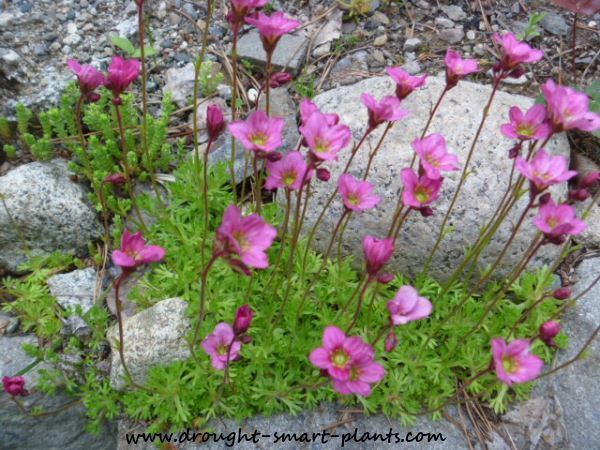 | ||
Lower classifications Saxifraga stolonifera, Saxifraga oppositifolia, Saxifraga paniculata, Saxifraga aizoides, Saxifraga bryoides | ||
Saxifraga is the largest genus in the family Saxifragaceae, containing about 440 species of holarctic perennial plants, known as saxifrages or rockfoils. The Latin word saxifraga means literally "stone-breaker", from Latin saxum ("rock" or "stone") + frangere ("to break"). It is usually thought to indicate a medicinal use for treatment of urinary calculi (known as kidney stones), rather than breaking rocks apart.
Contents
- Best perennials for sun saxifraga triumph arend s saxifrage
- Description
- Ecology
- Cultivation
- Uses
- Formerly placed here
- Other saxifragous plants
- References
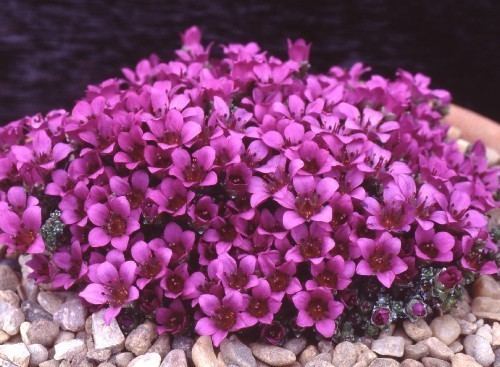
The genera Saxifragopsis (strawberry saxifrage), and Saxifragella are sometimes included in Saxifraga. In recent DNA based phylogenetic analyses of the Saxifragaceae, the former sections Micranthes and Merkianae are shown to be more closely related to the Boykinia and Heuchera clades, and the most recent floras separate these groups as the genus Micranthes.
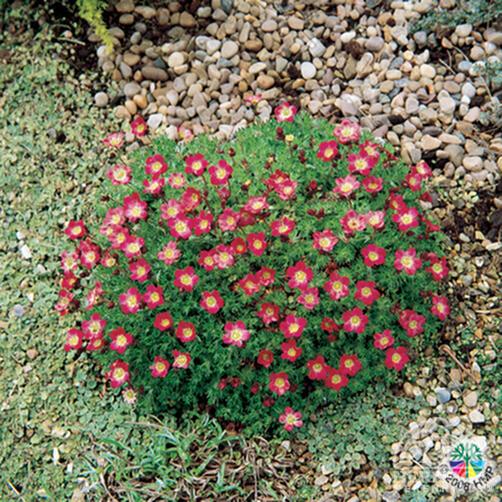
Best perennials for sun saxifraga triumph arend s saxifrage
Description

Most saxifrages are smallish plants whose leaves grow close to the ground, often in a rosette. The leaves typically have a more or less incised margin; they may be succulent, needle-like and/or hairy, reducing evaporation.
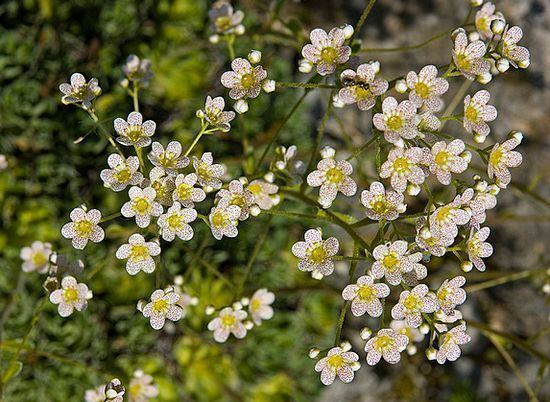
The inflorescence or single flower clusters rise above the main plant body on naked stalks. The small actinomorphic hermaphrodite flowers have five petals and sepals and are usually white, but red to yellow in some species. As in other primitive eudicots, some of the 5 or 10 stamens may appear petal-like.
Ecology
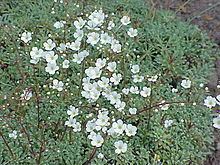
Saxifrages are typical inhabitants of Arctic–alpine ecosystems, and are hardly ever found outside the temperate parts of the Northern Hemisphere; most members of this genus are found in subarctic climates. A good number of species grow in glacial habitat, such as S. biflora which can be found some 4,000 metres (13,000 ft) above sea level in the Alps, or the East Greenland Saxifrage (S. nathorstii). The genus is also abundant in the Eastern and Western Himalayan alpine shrub and meadows. Though the archetypal saxifrage is a small plant huddling between rocks high up on a mountain, many species do not occur in such habitat and are larger (though still rather delicate) plants found on wet meadows.

Various Saxifraga species are used as food plants by the caterpillars of some butterflies and moths, such as the Phoebus Apollo (Parnassius phoebus).
Cultivation

Numerous species and cultivars of saxifrage are cultivated as ornamental garden plants, valued particularly as groundcover or as cushion plants in rock gardens and alpine gardens. Many require alkaline or neutral soil to thrive.
S. × urbium (London pride), a hybrid between Pyrenean saxifrage (S. umbrosa) and St. Patrick's cabbage (S. spathularis), is commonly grown as an ornamental plant. Another horticultural hybrid is Robertsoniana saxifrage (S. × geum), derived from kidney saxifrage (S. hirsuta) and Pyrenean saxifrage. Some wild species are also used in gardening. Cambridge University Botanic Garden hosts the United Kingdom's national collection of saxifrages.
The following species and cultivars have gained the Royal Horticultural Society's Award of Garden Merit:-
Uses
Purple Saxifrage (S. oppositifolia) is a popular floral emblem. It is the territorial flower of Nunavut (Canada) and the county flower of County Londonderry in the UK. Known as rødsildre ("red saxifrage") in Norway, it also is the county flower of Nordland. It is on the seal of Fitchburg State University, whose motto is "Perseverantia" in reference to the rock-breaking abilities of the plant over time. Tsukuba in Japan has as its city flower hoshizaki-yukinoshita (Katakana: ホシザキユキノシタ), the aptera form of Creeping Saxifrage (S. stolonifera). The leaves of the Japanese variety "yukinoshita" (literally "Under the snow") can also been eaten, and is consumed at least within the large southern island of Kyushu. It is prepared by frying the younger succulent leaves in tempura batter.
Charles Darwin – erroneously believing Saxifraga to be allied to the sundew family (Droseraceae) – suspected the sticky-leaved Round-leaved saxifrage (S. rotundifolia), Rue-leaved saxifrage (S. tridactylites) and Pyrenean saxifrage (S. umbrosa) to be protocarnivorous plants, and conducted some experiments whose results supported his observations, but the matter has apparently not been studied since his time.
In literature, saxifrages do not figure prominently – that is, outside the literary short story by Walter Wangerin, called Saxifrage, the Break-Rock, or scientific writing such as the studies of Adolf Engler or the landmark The Structure and Biology of Arctic Flowering Plants. White Mountain saxifrage (S. paniculata) is discussed in Nicholas Culpeper's 1652 herbal The English Physitian. Well-known references to saxifrages in literature are:
Formerly placed here
Plants formerly placed in Saxifraga are mainly but not exclusively Saxifragaceae. They include:
Other "saxifragous" plants
Several plant genera have names referring saxifrages although they might not be close relatives of Saxifraga. They include:
Some plants refer to Saxifraga in their generic names or specific epithets, either because they are also "rock-breaking" or because they resemble members of the saxifrage genus:
